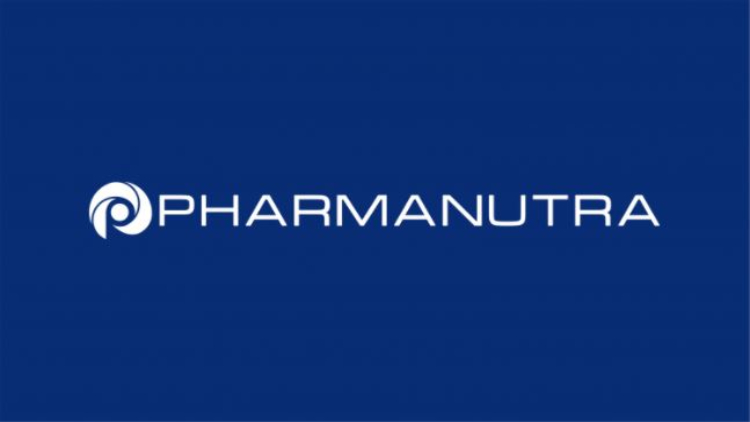Promotional Features
Enhancing mobility and easing pain in musculoskeletal conditions
Musculoskeletal pain has an important impact on quality of life.
Chronic pain causes several complications, such as disturbed and fragmented sleep, fatigue, depression, and the inability to participate in certain daily activities.
The World Health Organization (WHO) defines musculoskeletal disorders as "health problems of the musculoskeletal system, namely muscles, tendons, bone skeleton, cartilages, ligaments and nerves. This includes all types of ailments, from small transient discomfort to irreversible and disabling injuries".
Among the diseases that contribute to musculoskeletal problems, the fibromyalgic syndrome, or fibromyalgia, is the most disabling one.
Fibromyalgia
Fibromyalgia is a chronic rheumatic disease that is characterized by widespread muscle pain in the absence of inflammation signs. It is often in association with other symptoms such as fatigue, sleep disorders, memory deficits and concentration issues.
The pain associated with fibromyalgia is generally chronic and persistent, predominantly in the muscle-tendon system, which involves more regions of the body, as neck, shoulder and arms.
Currently, there is no cure for fibromyalgia and intervention is recommended to limit the painful symptomatology of those suffering from it.
It is well known that the management of musculoskeletal disorders includes both non-pharmacological treatments (physiotherapy and manual therapy) and pharmacological treatments such as non-steroidal anti-inflammatory drugs (NSAIDs) and analgesics.
Manual therapy is a method of treatment used by physiotherapists and physiatrists, involving specialized manual techniques to solve patients' neuro-musculoskeletal dysfunctions. The objective of manual therapy is to reduce pain and inflammation, improve joint mobility, and reduce muscle tension. Exercise is also useful in this context, especially when it is alternated between light aerobic exercise (walking, cycling) and postural exercises or mild muscle strengthening, to help strengthen the musculoskeletal structures.
Therapeutic strategies
An important aid for the management of muscle stiffness and tenderness is given by Cetylated Fatty Acids (CFAs) patented by Pharmanutra S.p.A. in Cetilar® branded products. CFAs are a mix of fatty acids of plant origin that have proven to be effective in reducing muscle joint and tendon pain. The Cetilar® product line consist of three products for topical use (Cream, Patch and Tape) and an oral food supplement (Cetilar® Oro). The latter, containing a new ingredient called Lipocet®, is the result of eight years of research by PharmaNutra SpaIn February 2022, the European Union approved the marketing authorization of Lipocet® as Novel Food.
Cetilar® Cream assists massage therapy, by helping articulation and movement in cases of joint diseases on an osteoarthritic basis. The massage can reduce the painful symptomatology at the joint and musculoskeletal level, useful even in cases of sports trauma. The cream can be applied up to two times a day on the affected area.
Cetilar® Patch helps to restore mobility and function of the joints while relieving pain in the event of trauma, stretching, contractures and sprains. A recent study published in the international journal BMC Musculoskeletal Disorders involved subjects with shoulder tendinopathy.1 The results showed how the application of the Cetilar® Patch for ten consecutive days was useful in reducing pain and increasing joint function in subjects suffering from this frequent clinical condition.1
Cetilar® Tape is an inelastic adhesive tape, designed to reduce pain symptoms in the case of muscle and joint disorders such as sports trauma, sprains, tension, and contractures. It is formulated with CFAs which allow effective and targeted absorption directly in the sore anatomical area.
Distinctive Cetilar® Patch and Cetilar® Tape features:
• Adheres easily to the skin
• Resistant to sweat and water
• Ensures proper absorption through the skin tissue
• Allows the recovery of joint mobility and functionality
• A pleasant and refreshing scent
Cetilar® Oro is the newer and only food supplement based on CFAs, due to the experience of topical Cetilar® products. A recent study has been published showing that four weeks of treatment with Lipocet® has been shown to be effective in reducing pain and improving mobility in individuals with chronic back pain.2
CFAs mechanism of action
The mechanism of action of CFAs is to promote joint lubrication and therefore to improve mechanical functionality of the joint’s movement. In addition, it has been shown that the beneficial effect produced by CFAs, applied by therapeutic massage in subjects with osteoarthritis pain syndrome, could be mediated by the mechanical modification of the synovial membrane, thereby reducing painful symptoms.
Cetilar® products can support joint mobility and help to reduce painful symptoms in the joints, muscles, skeleton and tendons. They can be a valuable aid in pain management in some clinical conditions, such as fibromyalgiaor musculoskeletal disorders.
References
1. Lanzisera, R.; Baroni, A.; Lenti, G.; et al. (2022). A prospective observational study on the beneficial effects and tolerability of a cetylated fatty acids (CFA) complex in a patch formulation for shoulder tendon disorders. BMC Musculoskelet Disord. Volume 23, Issue 1:352.
2. Pelak, A.; Barve, A.; Carroll, K.; et al. (2023). Effect of Cetylated Fatty Acid Supplementation on Axial Discogenic Low Back Pain. International Journal of Physical Medicine & Rehabilitation. Volume 11, Issue 662.
3. World Health Organisation. Preventing musculoskeletal disorders in the workplace.
Additional References
1. Babatunde, OO.; Jordan, JL.; Van der Windt, D.A.; et al. (2017). Effective treatment options for musculoskeletal pain in primary care: a systematic overview of current evidence. PLoS ONE. Volume 12, Issue 6.
2. Crawford, C.; Boyd, C.; Paat, C.F.; et al. (2019). Dietary ingredients as an alternative approach to mitigating chronic musculoskeletal pain: evidence-based recommendations for practice and research in the army. Medicine of pain. Volume 20, Issue 6: 1236-1247.
3. PharmaNutra.
4. Humanitas Research Hospital. Fibromialgia.






